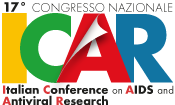Welcome to Prestigio Registry platform
Abstract from ICAR 2025 - Fri May 23 2025

All-Cause Mortality in People with Four-Class Drug-Resistant HIV: A Matched Cohort Analysis with Data from the PRESTIGIO Registry
Background: Heavily treatment-experienced people with HIV (PWH) face a high risk of adverse clinical outcomes. However, it remains unclear whether they have a higher risk of mortality compared to PWH without multidrug-resistant viruses. We aimed to assess whether individuals with four-class drug resistance (4DR-PWH) have an increased risk of death compared to those without 4DR (non-4DR-PWH).
Methods: This retrospective, propensity score-matched cohort study compared 4DR-PWH (exposed) with non-4DR-PWH (unexposed), all receiving antiretroviral therapy (ART). 4DR-PWH were identified from the multicenter PRESTIGIO Registry, while non-4DR-PWH were selected from the CSL cohort (IRCCS San Raffaele Hospital). Matching was performed at a 4:1 ratio based on age (±3
years), sex assigned at birth, and ART duration (±3 years). The index date (baseline) was defined as the time of 4DR development for the exposed group, while for the unexposed group, it corresponded to the time point used for matching on age and ART duration, employing a nearest-neighbor method with a caliper distance of ±3 years for both variables. Incidence rates (IRs) and incidence rate ratios (IRRs) for death were estimated using Poisson regression, while cumulative mortality probabilities were assessed via Kaplan–Meier curves. Cox proportional hazards models were used to examine the total effect of 4DR status on mortality, adjusting for pre-existing comorbidities at the index date (major cardiovascular events, chronic kidney disease, diabetes, hypertension, HCV, and cancer).
Results: A total of 228 4DR-PWH and 869 non-4DR-PWH were included, contributing 2,003 and 7,260 person-years (PY) of follow-up, respectively, with a median follow-up of 8.7 years (IQR 5.6–11.3). Participant characteristics are detailed in Table 1, and causes of death in Table 2. The median age was 51 years (IQR 46–55), the majority were male (809/1,097, 73.7%), and the median duration of ART exposure was 18 years (IQR 14.6–21.4). During follow-up, 28/228 (12.3%) 4DR-PWH and 67/869 (7.7%) non-4DR-PWH died, corresponding to IRs of 1.4/100 PY (95% CI 0.93–2.02) and 0.92/100 PY (95% CI 0.72–1.17), respectively, yielding an IRR of 1.51 (95% CI 0.97–2.35, p=0.063). Kaplan–Meier analysis showed a non-significant increase in the 10-year probability of death for 4DR-PWH compared to non-4DR-PWH [12.37% (95% CI 7.28–17.58) vs. 8.76% (95% CI 6.42–11.05); p=0.068] (Figure 1). In univariable analysis, 4DR-PWH had a non-significant increased risk of death compared to non-4DR-PWH [hazard ratio (HR) 1.50, 95% CI 0.97–2.34, p=0.07]. However, in multivariable analysis adjusted for comorbidities, 4DR-PWH had a significantly higher risk of death [adjusted HR 1.70, 95% CI 1.08–2.66, p=0.021] compared to non-4DR-PWH.
Conclusions: 4DR-PWH have a significantly increased risk of death compared to non-4DR-PWH, highlighting the need for enhanced clinical and preventive strategies tailored to this vulnerable population.


